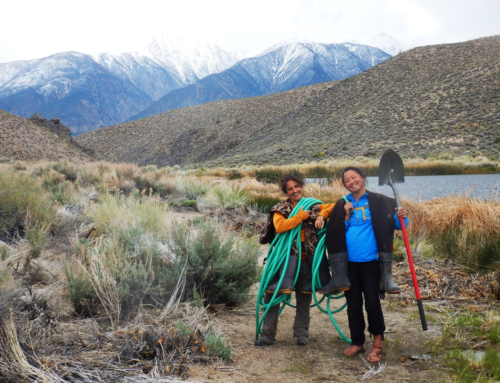
Discovery is the constant of my work. “Monitoring” an easement may sound as vague as it does bland. And when I tell people that a large portion of my job is monitoring easements, it usually doesn’t pique their interest. However, working outdoors – walking beautiful sections of land that I return to over and over again feels anything but bland.
I am constantly discovering new things – an easier way through the brush, a new spring, a stockpile of cultural artifacts, evidence of wildlife never documented on the property. Certain monitoring visits even begin to feel like a scavenger hunt how many new arborglyphs* can I find? Are the wild currants ripe to taste? Will I hear any sage grouse bellow today? As if this isn’t entertaining enough, I also have a running list of all the bizarre trinkets or mysteries I’ve discovered: nice Harley Davidson blankets in the middle of nowhere and inexplicable 3 foot deep trenches stretching hundreds of yards, just to name two.
Occasionally monitoring visits become exciting for other reasons. I’ve found myself soaking to mid-thigh in irrigated cattle pastures trying to get over a barbed wire fence without dropping the iPad, ripping my pants, and losing my boots. I’ve developed evasion plans to get into the ESLT vehicle as it was swarmed by bees, and I’ve bushwhacked through impossibly thick and spiny brush while headed down steep grades, through snow, and over creeks just to find a single photo documentation location.
As an accredited Land Trust, ESLT is legally obligated to monitor our conservation easements by making annual inspections of the property to ensure that the terms of the easement are upheld. In order to meet this objective, I must visit the whole property and this is where the journey of discovery takes place. I’m so fortunate that scavenger hunts are part of my job.
*Arborglyphs are aspen tree carvings from sheepherders, many of them Basque and Peruvian, between the 1840s and 1960s. While carvings exist in later dates, they are not often prescribed the same historic value.






